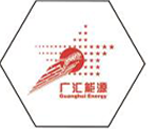
10 月 . 14, 2024 17:55
Back to list
Understanding High Pressure Regulators and Their Importance in Various Applications
Understanding High Pressure Regulators Function, Types, and Applications
High pressure regulators are essential components in a variety of industrial applications, ensuring the safe and efficient management of gas and fluid pressures. These devices play a critical role in systems where gases and liquids are stored and transported under high pressure, acting as a safeguard to control and stabilize the pressure that is delivered to downstream equipment.
What is a High Pressure Regulator?
A high pressure regulator is a mechanical device designed to reduce and control the outlet pressure of a gas or fluid from a high-pressure source to a more manageable level. These regulators are essential in preventing excessive pressure that can lead to catastrophic failures, system damage, or safety hazards. They are particularly crucial in industries such as oil and gas, chemical processing, and manufacturing, where high-pressure gases are commonly used.
How Does a High Pressure Regulator Work?
High pressure regulators operate based on the principle of pressure reduction through a series of internal components. When high-pressure gas enters the regulator, it travels through a diaphragm or piston that responds to pressure changes. The design typically features a spring-loaded mechanism that adjusts to maintain a designated outlet pressure. As the downstream demand fluctuates, the regulator automatically modulates the flow of gas to maintain the set pressure, ensuring that the downstream system operates efficiently and safely.
Types of High Pressure Regulators
High pressure regulators can be categorized into several types, depending on their application and design features
1. Single-Stage Regulators Designed for applications where the pressure drop is limited, these regulators reduce high pressure to a lower pressure in one step. They are simpler in design but may not offer precise control under varying flow conditions.
2. Two-Stage Regulators These regulators provide a more stable pressure control by utilizing two separate stages of pressure reduction. The first stage reduces the high inlet pressure to an intermediate level, while the second stage fine-tunes the flow to the desired outlet pressure. This design is beneficial in applications with fluctuating demands and provides improved regulation stability.
high pressure regulators

3. Dome-Loaded Regulators These regulators utilize a dome filled with gas or liquid that assists in maintaining a constant outlet pressure. They are often seen in more specialized applications where precise pressure and flow control are critical.
4. Cylindrical Regulators Used mainly in gas distribution systems, these regulators control pressure from gas cylinders. They are typically compact and designed to handle only one cylinder at a time.
Applications of High Pressure Regulators
The applications for high pressure regulators are extensive, reflecting the diverse industries that rely on high-pressure systems. Key areas include
- Oil and Gas In this industry, high pressure regulators are used in drilling operations, gas compression, and distribution systems. They help manage the pressures within pipelines and storage tanks, ensuring safe and efficient operation.
- Chemical Processing Many reactions in the chemical industry require precise control of gases under high pressure. Regulators are used to deliver raw materials and maintain optimal conditions for production.
- Welding and Cutting In industrial welding and cutting applications, high pressure regulators provide a controlled flow of gases such as acetylene and oxygen, essential for achieving the correct flame characteristics required for various processes.
- Medical Applications High pressure regulators are crucial in medical gas delivery systems, ensuring a consistent and safe supply of gases such as oxygen for patients.
Conclusion
High pressure regulators are vital devices in managing the pressures in various systems where gases and liquids are stored or used. Their ability to reduce and regulate pressure effectively prevents hazards and improves the efficiency of processes. Understanding the different types of regulators and their applications helps industries choose the right solution for their specific needs, ensuring safety and operational reliability. As technology continues to evolve, advancements in regulator designs will further enhance their performance, making them even more indispensable in industrial applications.
Next:
Latest news
-
Unlocking The Quality Gas Pressure ReducersNewsNov.01,2024
-
The Role of Gas Pressure Reducing StationsNewsNov.01,2024
-
The Importance and Functionality of Safety Relief ValvesNewsNov.01,2024
-
The Essential Role of Safety Valves in Natural Gas ApplicationsNewsNov.01,2024
-
The Essential Role of Gas Pressure RegulatorsNewsNov.01,2024
-
Enhance Your Premium Gas FiltersNewsNov.01,2024

